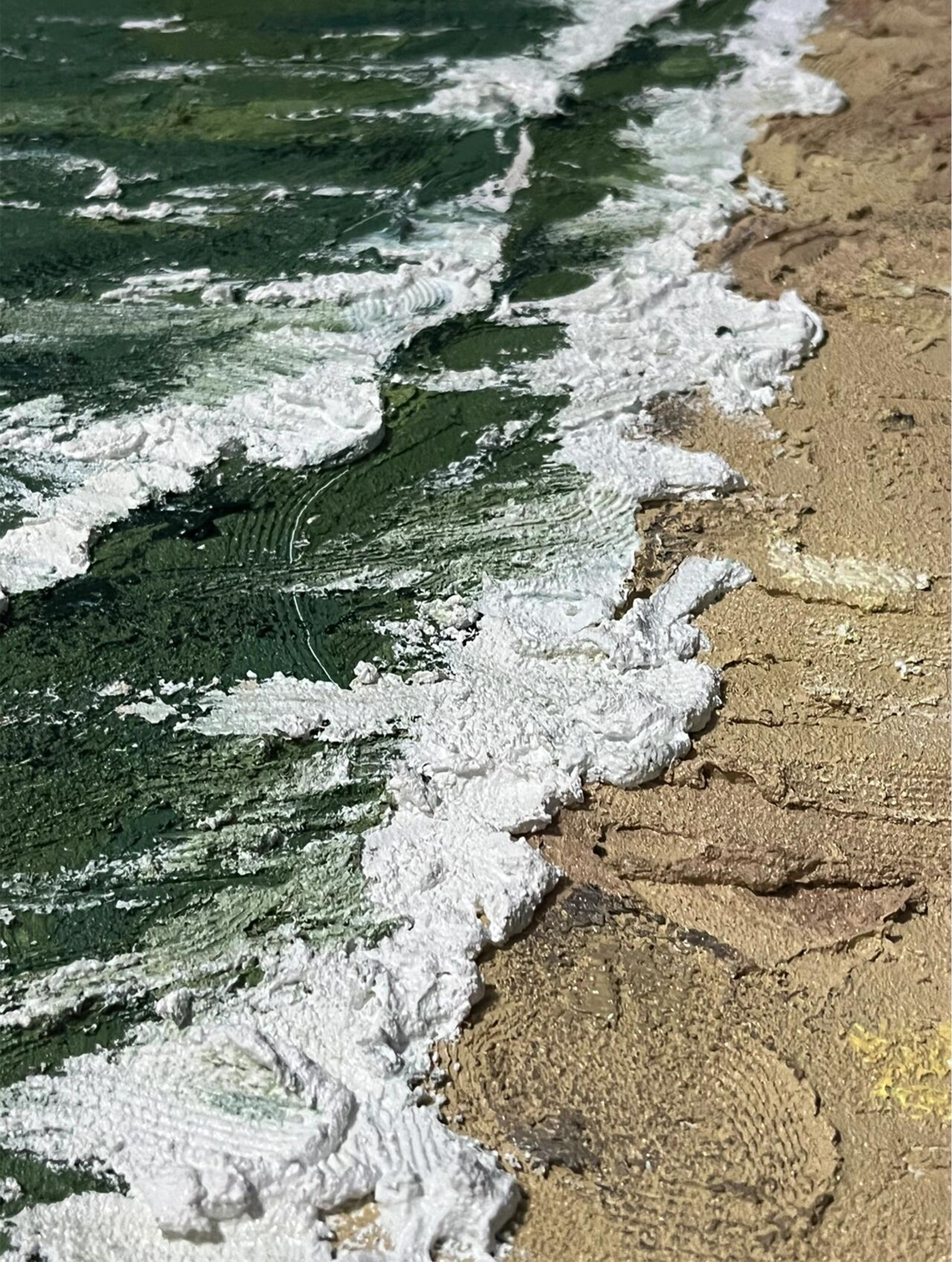Sea foam adds a dynamic element to ocean paintings, conveying motion and energy. The “Deep Green Sea Textured Painting” illustrates how textured techniques can effectively represent frothy waves.
Studying Sea Foam Patterns
Observe how sea foam forms and dissipates. Its irregular patterns and translucency can be challenging to capture but are essential for realism.
Essential Materials
- Oil Paints: Titanium White, Payne’s Grey, Cobalt Blue.
- Tools: Fan brushes, sponges, palette knives.
Techniques for Foam Texture
Use a fan brush to apply light, feathery strokes of white paint over the wave crests. Sponges can create irregular patterns, mimicking the randomness of foam. Layering different shades adds depth and realism.
Highlighting and Shadows
Incorporate subtle shadows beneath the foam to give it volume. Mixing a small amount of grey or blue into the white paint can help achieve this effect.
Finishing Touches
Glazing can add a soft glow to the foam, enhancing its appearance. Ensure the foam integrates naturally with the surrounding water to maintain cohesion in the painting.
